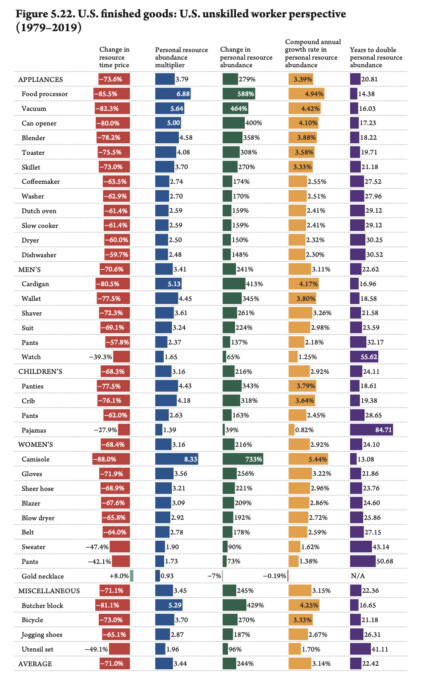This year, many of us could see a leaner Christmas. According to one poll, around 60 percent of Americans plan to cut back on gift-giving due to inflation. Of course, such cutbacks are relative. With the average American planning to spend around $900 on presents this season, there will still be plenty of gifts going around.
And that’s pretty amazing. While this recent bout of inflation has been painful, let’s not forget our history. In the early 1900s, a working-class family in the United Kingdom, one of the richest countries in the world, couldn’t afford toys on Christmas. In 2021, a U.S. blue-collar worker could buy a virtual reality system (possibly the coolest toy ever made) for around 11 hours of work.
Christmas has become more abundant in recent decades as well. As a part of their book, Superabundance, Drs. Gale L. Pooley and Marian L. Tupy track the time prices of 35 finished goods—things like bicycles, blenders, and watches. Put simply, time prices represent how long someone must work to earn enough money to buy something. Tupy and Pooley find that, for U.S. unskilled workers, the time price of finished goods declined 71 percent between 1979 and 2019.
Let’s put that differently. For the same time it took an unskilled worker to earn the money to buy one basket of finished goods in 1979, he or she could buy 3.44 in 2019. The time it took to buy one sweater in 1979 could get you two in 2019. One pair of gloves has turned into 3.5 (useful if you lose one). One bicycle has become nearly four.

So, after you complain about inflation over Christmas dinner, maybe spare a word for the massive rise in prosperity we’ve enjoyed over the last 40 years.
For more long-term data on abundance and, importantly, how we can sustain it, you should check out the book—which is now 25 percent off!


